How Back 4 Blood and The Anacrusis are building on the legacy of Left 4 Dead
A chat with Turtle Rock and Stray Bombay about the new golden age of co-op shooters
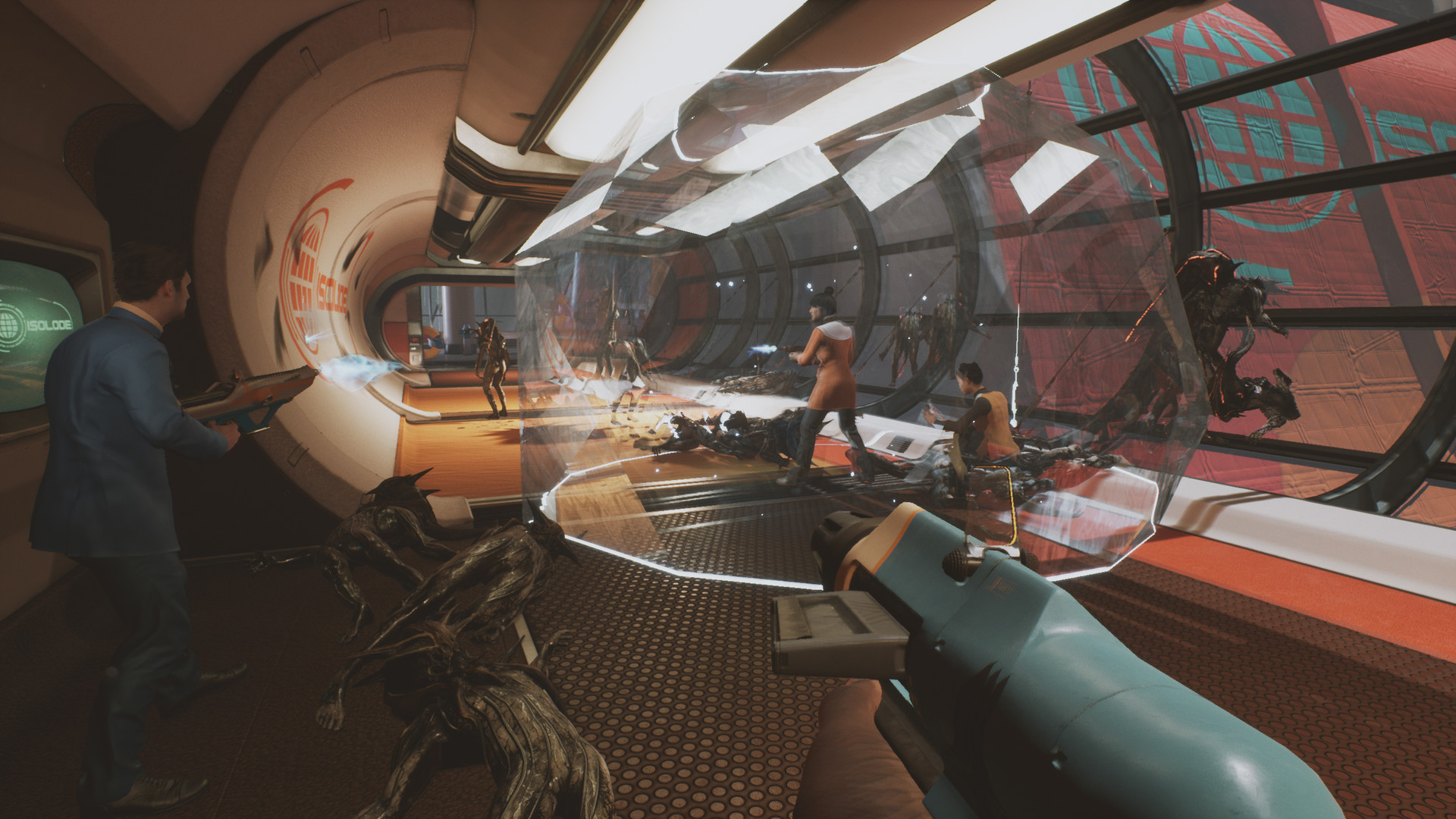
Co-op shooters are having a bit of a moment. From The Anacrusis and Back 4 Blood to Rainbow Six Extraction and Arkane's Redfall, the genre is suddenly swarming like the last hallway before a safe room in the common ancestor Left 4 Dead. But despite some shared blood, today's co-op shooters are all putting their own spin on the genre.
The Anacrusis and Back 4 Blood, in particular, have benefited from the input and experience of Left 4 Dead veterans who are now elevating the genre in new and exciting ways. To get a better idea of how these two games are building on the legacy of Left 4 Dead, I spoke to the folks at The Anacrusis developer Stray Bombay and Back 4 Blood studio Turtle Rock, who've come up with totally different solutions to similar design challenges.
Hold 'em or fold 'em in Back 4 Blood

Co-op shooters live and die by their replayability. It helps if your first run makes a good impression, but what matters more is if the 50th is able to keep you on your toes. Does your 100th run introduce a combination of challenges you've never seen? Are you still fighting tooth and nail in your 500th run? We play these games because they're fundamentally fun shooters, but we keep playing them because at their best, they're peerlessly dynamic.
Back 4 Blood is investing in replayability in two big ways. Firstly, it's got competitive multiplayer running in parallel to its co-op PvE, offering a totally different experience by letting players bat for the zombies. But deep down, Back 4 Blood's replay value comes from its card system.
By letting us craft decks of perk cards which are distributed throughout each run almost like a deck builder, Back 4 Blood gives us a fascinating skill tree and a way to control RNG, all while preserving just enough randomness to keep things interesting. With a guiding Game Director playing cards of its own to add new enemies and hazards, cards become the bedrock for everything in Back 4 Blood – and based on all the betas and previews so far, it works incredibly well.
"We knew what we wanted to do, in terms of getting four players from A to B, and we've got the safe room," explains lead producer Matt O'Driscoll. "And then how do we build on that? How do we make this Turtle Rock's game of today? So one of our big ones there is the card system and how that comes into play. Particularly as you get into the game and start to unlock different cards and different players start building different decks, you're going to try to find a lot of experiments in there – I like this deck, I like this card, I want to play this way. And so we hope to find that, you know, people start building different decks and different ways of playing through the game with different play styles."
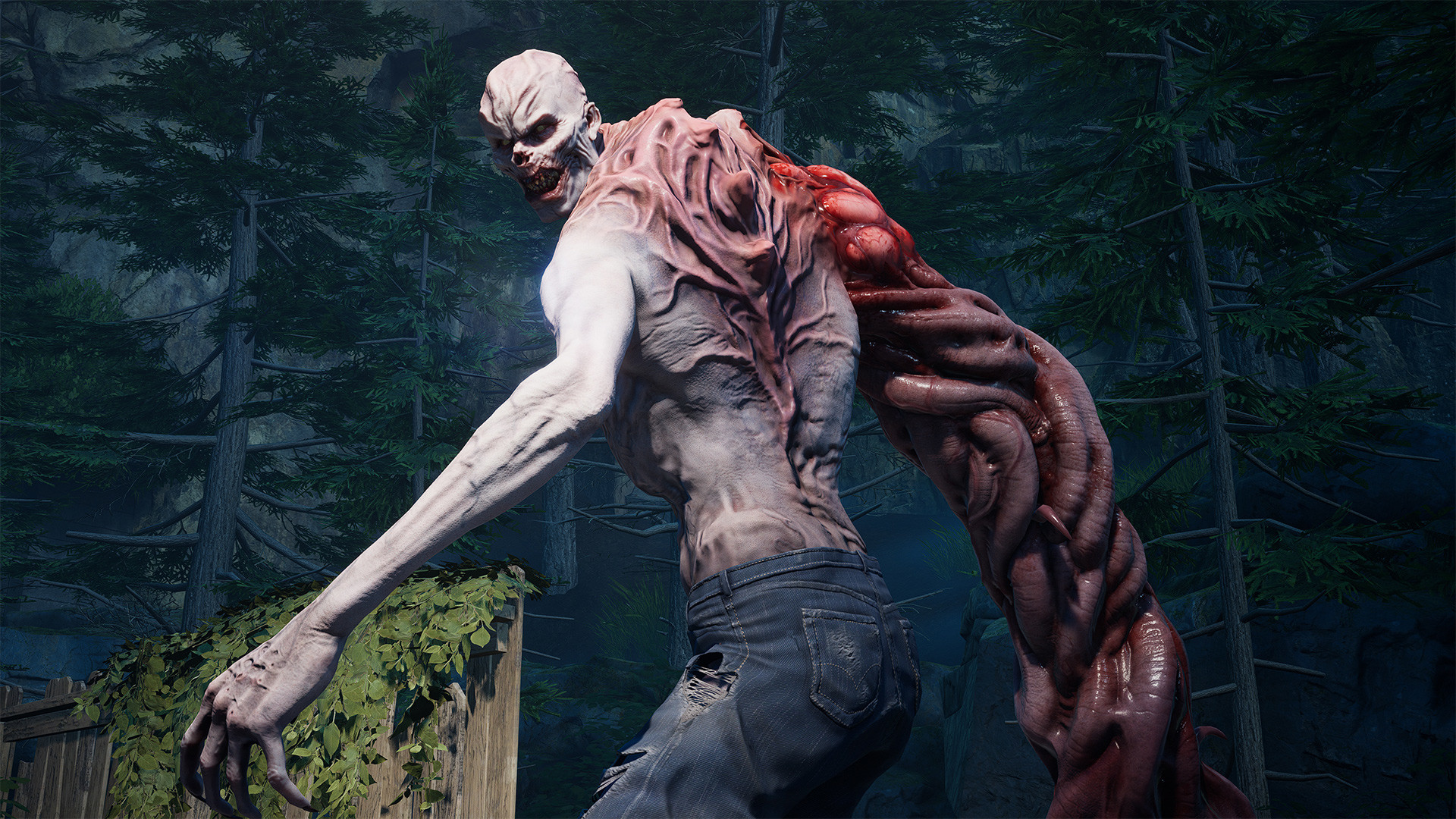
"Here's a good example," he adds. "There's a card which, if you're incapacitated, while you're incapped, you're giving the rest of your team health. Now, that becomes a real interesting balance permutation, right? Normally, if you go incap, your job is to try and get close to the player and help them up as quickly as you can. But I'm getting health, so how quickly do I want to help this person up when I'm getting some free health from them being incapped? How you build these decks, and how you have these different things in there, it's gonna be... we've done it as best we can. But now we're opening it up to a wide world, it's going to be super interesting to see how people do that and build different decks."
Weekly digests, tales from the communities you love, and more
You may breeze through the game and we can be like, well, enough of that
Matt O'Driscoll
The brilliance of Back 4 Blood's card system is its mix of control and chaos. You can build the perfect melee deck, but if the game plays a few exploder cards of its own, you'll have to scrounge up a new strategy or be forced to fight walking bombs with a hammer. If you rely too heavily on one card to provide health or ammo, you may well die before you draw that card. Deck-building has its own learning curve, and maybe it's just the Hearthstone nutter in me, but I've found theorycrafting new builds to be as satisfying as shooting Back 4 Blood's Ridden.
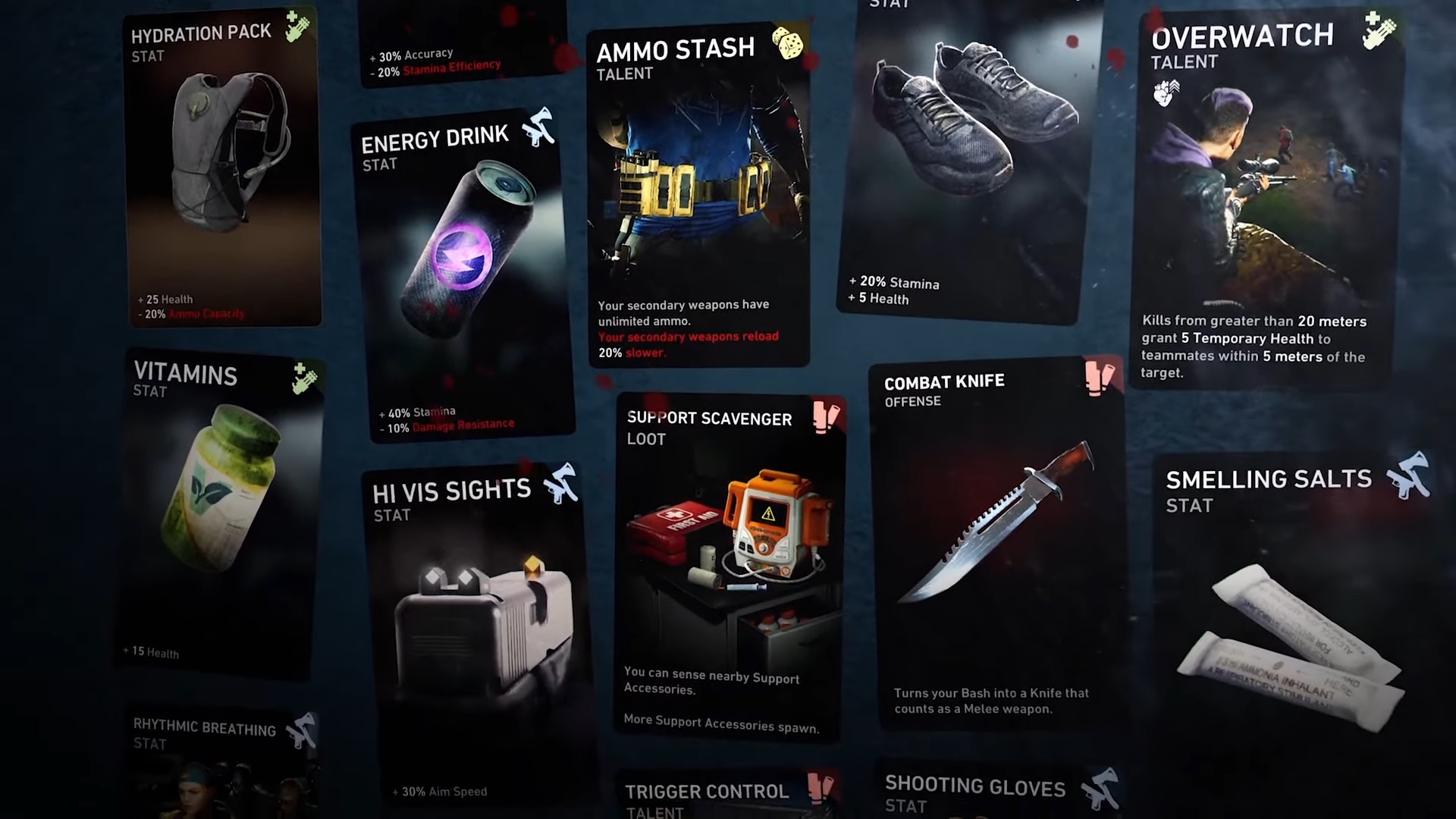
"Then on the flip side, we've still got the AI Director watching you play and how you're playing the game," O'Driscoll continues. "You may breeze through the game and we can be like, well, enough of that, we're going to throw a horde at you at this point, and maybe put some more of the mutated Ridden in there. But also, they've got their own set of cards, the game itself does. So they can play those – we call them corruption cards. So at the start of a round they might go, well in this one we're gonna make it foggy or dark, or we're gonna throw in some more kind of dangerous Ridden at you, some of them we can cover their weak spots with armor and things like that."
Much like Left 4 Dead, Back 4 Blood has classical difficulty settings (normal, hard, etc.) as well as more nuanced adjustments that happen on the back end via the Director. Simply put, the Director will sometimes play more difficult corruption cards, either to respond to or outright disrupt your performance. This dovetails nicely with The Anacrusis, which has taken the idea of an AI dungeon master to a rare extreme.
Beat the system in The Anacrusis
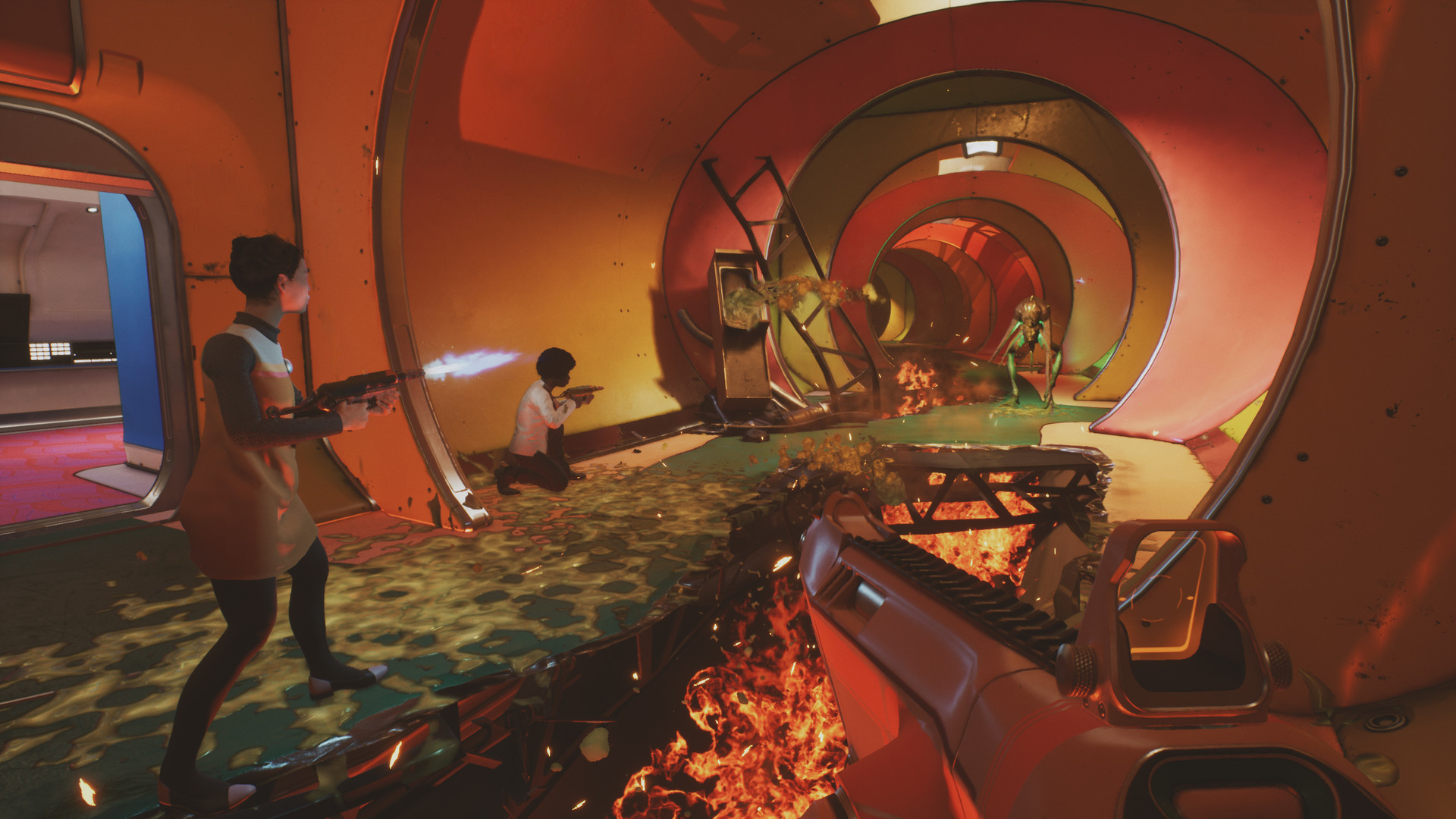
"I was a lead on Left 4 Dead 1 and 2, and I'm not an AI person, but we learned a lot about what people reacted to and what people noticed and didn't notice," says Stray Bombay CEO Chet Faliszek. "You can do a lot of things that are different every time that players really won't notice because they're too busy fighting things, or you haven't given them enough time between those encounters to understand how different they are, or the maps aren't long enough. There's a whole bunch of things you can do that don't break it up."
"We wanted something that was not just different each time you play it, but actually listening to you as you're playing as well. So while it's different every time, if you're a super hardcore team or it's the first time you've ever played an FPS game, you're still gonna get breaks. You're still gonna get these ups and downs. It's about leaving space. The game is social, so you're gonna have these discussions while you're playing and have all that interaction. That exists no matter what your skill level. But the game will actually adapt to how well you play."
The Anacrusis is set in a '70s sci-fi universe influenced by the likes of Space: 1999 and Logan's Run, albeit one that's defined by its alien infestation. It splashes in wild technology like laser and arc rifles, but its most impressive tech is the Driver that controls everything under the hood – and I mean everything. Maps are intentionally kept the same to let players master environments and anticipate choke points, but the Driver will adjust how many aliens you face, what kind of aliens are in each horde, where ammo is placed, what perks you receive, and more.
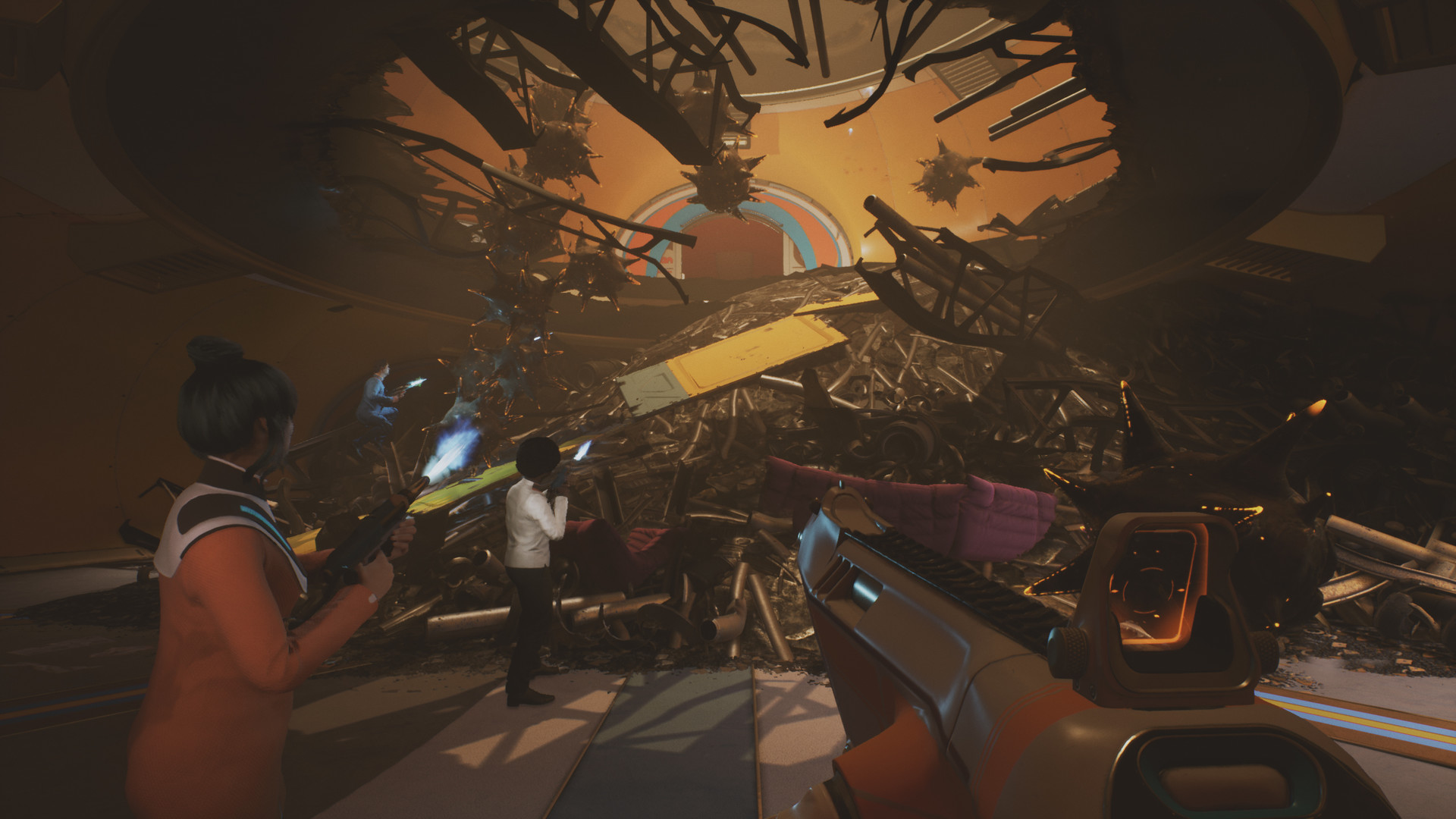
If the Driver recognizes that you're good at the game, for example, it will put ammo off the main path so you have to look for it. Maybe you'll encounter more enemies and more difficult combinations of special aliens. But let's say you're struggling a bit; the Driver might give you some extra ammo to help you out – and if you miss that ammo the first time, it might give you some more later down the line. If this sounds familiar, that's because Left 4 Dead pulled off some similar tricks with its own AI director back in the late 2000s. However, while The Driver in The Anacrusis is also adept at varying each playthrough, it's better equipped to make granular changes shaped by individual player performance.
"Good or bad teams, what you really want to have is that experience where there's like one person standing, they're rescuing everyone else, you're pulling it together, you're limping into the safe room with one health," Faliszek says. "We try to do things like, 'What if we give the pacing to the player and let them control it?' Well, players just push ahead. They set things off. They don't ruin their own game, but they won't have the understanding of the pacing in the same way that we can. With us owning all of that, we can have a lot more control and a lot more reaction."
Just as Turtle Rock had to heavily playtest its card balancing, Stray Bombay has tested and trained the Driver extensively. When you first start The Anacrusis, the Driver will begin collecting data on you immediately. Encounters and items are generated on the fly, not all at once at the beginning of a run, so it's able to start you off slow and ramp things up if you're playing well. If you play with the same group of three for weeks and suddenly a new player is your fourth party member, it will accommodate their skill level as well. "Sometimes it comes up with weird edge cases out of the way it deals with different encounters," says communications director Will Smith. "Some of those are really good, some of those are really bad. We find out through tests."
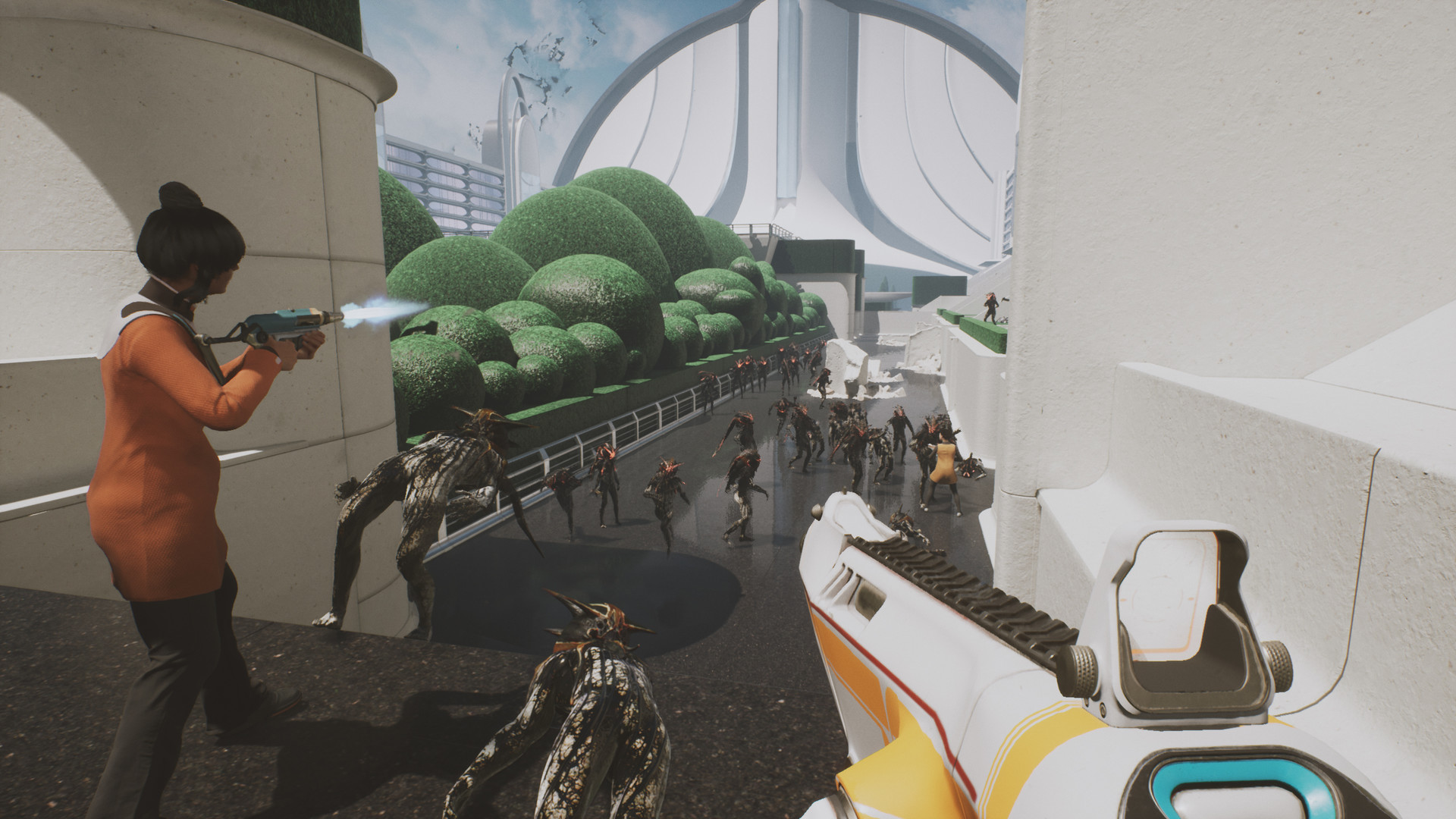
"You always want to be able to mix it up where, if we're paying attention to you and we understand how you're playing, you play with the same group every week, you can open that door and we throw just a gajillion things at you," Faliszek adds. "And you're like 'Oh my god, did you see that? That was insane, how do we ever do that?' You can't normally do that because you don't know what they experienced before or what they'll experience after. But if you're monitoring all that, you can do that. You know what, this really horrible experience of being overwhelmed isn't going to happen to you every time, but it is going to happen to you this one time, hope you enjoy it."
We've already given it out to modders to start playing with. We'd love to have some mods available right at launch, that's the goal.
Chet Faliszek
The Anacrusis is planning to deliver some truly off-the-wall edge cases as well. Stray Bombay says that sometimes fire will heal aliens instead of damaging them. Maybe the Driver will send a couple Brutes right at the end of a timed section. Annoying little buggers called Spawners will hide in a corner and fill the room with damaging orbs until you find them. These variables hit their fever pitch in The Anacrusis' weekly challenge, which throws the most absurd challenges and limitations at players. "The least interesting thing is to say enemies have double hit-points," Faliszek says. "It's way more interesting to say that if you're a really good team, occasionally we're going to attack you from behind. We're gonna hide things off the path. We're gonna restrict some of the items you have. That is more challenging in an interesting way."
Capturing the magic of Left 4 Dead

Another benefit of offloading so much to the Driver is that it makes The Anacrusis extremely moddable, just like Left 4 Dead was. "You can let modders make maps that are instantly fun and playable and challenging," Faliszek says. "They can make cool spaces in the sci-fi world and the AI will come in and take over. You can take any [geometry] and throw it into Unreal and mark the start and ending, and our system will go through and grind on it for a bit to find out that this is the path people will probably take, this is where off the path is, here's some other bits of data, and then you can play it."
"It was really important that we have that mod support out of the gate, both so we could create and test maps quickly, and also so the community can. I think that's one of Left 4 Dead's legacies, just how many mods people made and how much people played in that space. It's a fun space to play in. You have characters you like, you have a world that you understand, and you lay stuff down and you're just living in that zombie world, and in our case now you're living in a sci-fi space world… We've already given it out to modders to start playing with. We'd love to have some mods available right at launch, that's the goal."

The Anacrusis and Back 4 Blood both have creative perk systems and smart AI, but they've focused on different aspects of those ideas to create wildly different experiences. The parallels are nonetheless striking, and the fact that they've come along at roughly the same time, and from former Left 4 Dead designers, is just as fascinating. As Faliszek observes, this wasn't due to some post-pandemic longing for co-op play – "nobody that's talking about their game today started during the pandemic" – but rather, he believes, a growing love for the kind of playable social spaces these co-op shooters provide.
"I think there's a group of people that've been playing for a long time online and have always thought of games that way," he says. "I think it's that growing popularity of people who want to hang out and play inside games. Like, PUBG's fun, and PUBG is about winning, but I think one of the reasons it's so popular is that you get that downtime with your team – you're looting, you're talking, you're joking around, and then you're going off to do the murders. Those kinds of games have just been growing in popularity, and this space just makes it really nice. If you do like an MMO, that's just too many people. You aren't really engaged. If I play Battlefield 5 on a 64-player server, I can go get a drink of water and nobody's gonna notice. But if you're playing a four-player co-op game and you're engaged, you have to be engaged, you're having this shared experience together and it works really well at about that size."

Austin has been a game journalist for 12 years, having freelanced for the likes of PC Gamer, Eurogamer, IGN, Sports Illustrated, and more while finishing his journalism degree. He's been with GamesRadar+ since 2019. They've yet to realize his position is a cover for his career-spanning Destiny column, and he's kept the ruse going with a lot of news and the occasional feature, all while playing as many roguelikes as possible.


